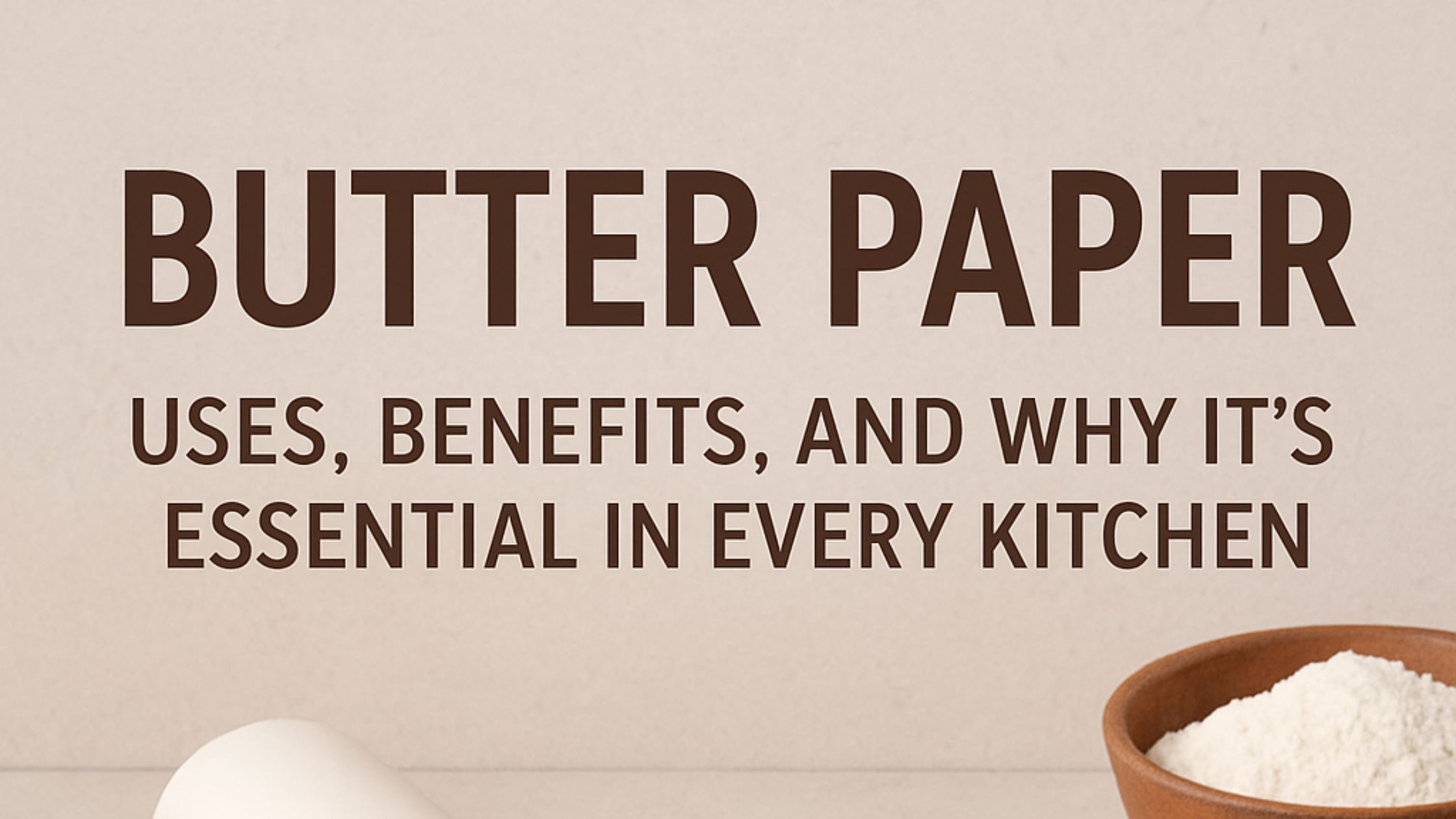When it comes to cooking and baking, some small essentials often make the biggest difference. One such unsung hero is butter paper, also commonly known as parchment paper or baking paper. Whether you’re baking cookies, roasting veggies, or simply storing food, butter paper plays a vital role in making kitchen work easy, clean, and efficient.
What is Butter Paper?
Butter paper is a non-stick, heat-resistant sheet specially designed for cooking and baking. It’s coated to resist grease and moisture, ensuring that food doesn’t stick to the surface. Unlike wax paper, butter paper can withstand oven temperatures, making it safe for baking.
Key Uses of Butter Paper
-
Baking—Place it on trays to prevent cakes, cookies, and pastries from sticking.
-
Roasting—Line your oven tray for easy cleanup after roasting vegetables or meat.
-
Food Wrapping—Keep food fresh and hygienic by wrapping sandwiches, rotis, or snacks.
-
Rolling Dough—Prevents dough from sticking to the rolling pin or surface.
-
Microwave Safe – Great for reheating food without making it soggy.
Benefits of Using Butter Paper
-
Non-Stick Convenience – No need to grease pans repeatedly.
-
Healthy Cooking—Reduces the use of excess oil and butter.
-
Easy Cleanup—Saves time by preventing greasy messes.
-
Hygienic Storage – Protects food from dust, moisture, and contamination.
-
Eco-Friendly Options—Many butter papers are biodegradable and safe for the environment.
Why Every Kitchen Needs Butter Paper
Butter paper isn’t just for professional chefs—it’s equally useful for home kitchens. From baking soft cakes to packing lunch, it adds convenience, hygiene, and efficiency. If you want your cooking experience to be smooth and mess-free, butter paper is a must-have in your kitchen drawer.
